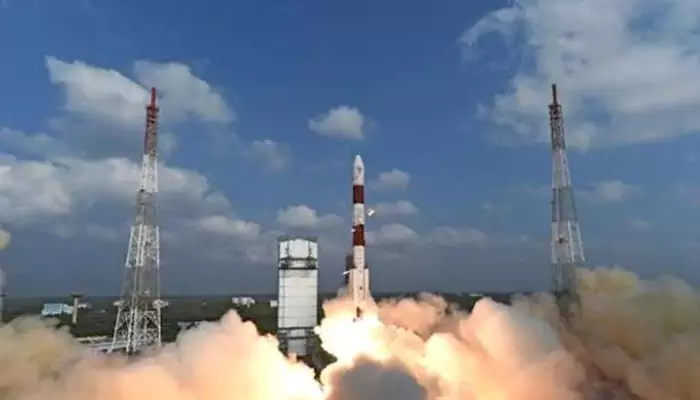Delhi Rain: From Scorching Heat to Heavy Flood; Why it's More Extreme than Ever?
- Admin
- 1 year ago
- 4 minutes read

After enduring one of the worst heatwaves, the residents of Delhi are witnessing severe water-logging due to excessive rainfall.
You just can't predict the nature. Couple of days ago, Kerala's Wayanad faced a devastating landslide claiming over hundreds of lives. Now, several places in the capital are witnessing floods due to few hours of rainfall. From nearly 50 degree Celsius to water-logging condition, why Delhi is facing such dramatic climatic extremes? Let's find out.
Present Scenario:
Although residents got the relief from heatwave, but this turned into massive headache too. Delhi has a history of shocking ramifications due to rainfall including disrupted flights, airport roof collapse, blocked underpasses, and huge traffic congestion.
Currently, Kashmere Gate and Rajinder Nagar have been flooded prompting the Indian Meteorological Department (IMD) to issue an emergency ‘red alert’ warning.
#WATCH | Delhi: Severe waterlogging witnessed on Minto Road after incessant rainfall in the national capital. pic.twitter.com/HnwN5lvB5w
— ANI (@ANI) July 31, 2024
Credit - @ANI X handle
“Moderate rainfall accompanied by moderate thunderstorms and lightning is likely to occur at North Delhi, Central-Delhi, New Delhi, South Delhi, South-East Delhi, East Delhi, NCR,” the IMD said.
“The city recorded over 100 millimeters of rainfall in just one hour,” According to the IMD’s Automatic Weather Station (AWS) network.
The National Flash Flood Guidance Bulletin has listed Delhi as an “area of concern”.
Till now, over 10 flights have been rerouted. The IMD advised: “Seeking safe shelter and avoiding tree cover are recommended to mitigate risks. Stay tuned for further updates as the situation develops.”
Why Delhi Faces Weather Extremes?
As per IMD report “Delhi saw 15 extreme weather events from Jan to March 2024, mostly cold days or cold waves, against 12 each recorded during the same period in 2023 and 2022.” This is followed by scorching heatwave and heavy flood now. The probable reasons are discussed below.

Geographical Impact: Located in the Northern Plains of the Indian Subcontinent, Delhi’s weather has been greatly influenced by Thar desert and Himalayas. This led to such extreme climatic patterns.
Impact of Global Warming: Scientifically, rise in one degree of earth's temperature causes around 7% increase of water vapour. This often causes the risk of rainfall drastically.
“Because of climate change, you will get more extreme rain events, which means more rain in a fewer number of rainy days, rainy hours,” said Sunita Narain, director general of research body Centre for Science and Environment (CSE). Although the overall annual rainfall amount is not increasing, states are experiencing heavy rainfall within a couple of days or weeks.

Impact of Pollution: Another major cause of heavy rainfall is rising pollution levels. “Pollution causes something called as ‘aerosol invigoration’ which leads to the formation of thunderstorm clouds. Given sufficient time, such clouds can grow and cause thunderstorms and heavy rainfall in certain areas”, V Vinoj associate professor at the School of Earth, Ocean and Climate Sciences at the Indian Institute of Technology (IIT), Bhubaneswar added.
The Sufferers:
According to Sunita Narain: “This is a time when we cannot but understand the crisis of a changing climate. This is borne out by the data in this report — there is clear evidence that extreme weather events are breaking the backs of the poorest in our world.”
These type of extreme climatic events has claimed 3,287 lives and destroyed nearly 2.2 million hectare crop area, as per IMD report.
Stay safe ..... especially Delhi, Haryana, UK, Himachal, Punjab .... We had that insane rain-shower yesterday and IMD thinks there is the risk of another today. pic.twitter.com/Dctk59zByx
— Sanjeev Sanyal (@sanjeevsanyal) August 1, 2024
Credit - @sanjeevsanyal X handle
Is there Any Solution?
The most sustainable solution would be digging more ponds and lakes to store the excess rainwater and use during water shortage. “Municipalities need to ensure drains and canals are un-clogged to avoid heavy flooding and major disruptions,” an expert mentioned.
Impacts of climate change and urbanisation are amplifying the risks of extreme climatic events like flood, cyclone, heatwave are increasing. It's high time to reconsider our activities and focus on sustainable practices.












